| yellow toadflax | USDA PLANTS Symbol: LIVU2 U.S. Nativity: Exotic Habit: Forbs/Herbs |
| Linaria vulgaris P. Mill. |
Jump to: Resources | Images | Distribution Maps | Sources
|
Taxonomic Rank: Magnoliopsida: Scrophulariales: Scrophulariaceae |
|
| Synonym(s): butter and eggs, Jacob's ladder, wild snapdragon | |
| Native Range: Europe and Asia (BAIL); | |
Yellow toadflax is a perennial herb that can reach 3.3 ft. (1 m) tall. Leaves are nearly sessile, drooping, linear and 1-2 in. (2.5-5 cm) long. Leaves can sometimes be sparsely covered by long hairs. Flowering occurs from May to September, when yellow/white, snapdragon-like flowers develop. Flowers, including the spur, are 0.6-1.2 in. (1.5-3 cm) long and occur in racemes at the apex of the stems. Fruits are capsules that are 0.4-0.5 in. (9-12 mm) long. Each capsule contains small, flat seeds with a papery wing. Yellow toadflax is native to Europe and was introduced into North America, as an ornamental, in the mid 1600s. Plants occur in fields, pastures, roadsides, undisturbed prairies and rangelands. |
|
Identification, Biology, Control and Management Resources
|
| Selected Images from Invasive.org | View All Images at Invasive.org |
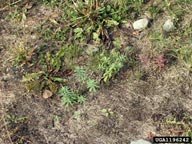 Seedling(s); Along with dandelion rosettes Elizabeth Bella, USDA Forest Service, Bugwood.org Additional Resolutions & Image Usage |
 Plant(s); Richard Old, XID Services, Inc., Bugwood.org Additional Resolutions & Image Usage |
 Plant(s); Elizabeth Bella, USDA Forest Service, Bugwood.org Additional Resolutions & Image Usage |
 Feature(s); Roots Steve Dewey, Utah State University, Bugwood.org Additional Resolutions & Image Usage |
 Flower(s); Montana Wendy VanDyk Evans, , Bugwood.org Additional Resolutions & Image Usage |
 Flower(s); Michael Shephard, USDA Forest Service, Bugwood.org Additional Resolutions & Image Usage |
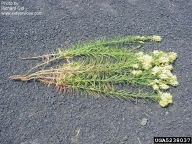 Plant(s); with flowers Richard Old, XID Services, Inc., Bugwood.org Additional Resolutions & Image Usage |
 Plant(s); side view of clump of plants in flower Dave Powell, USDA Forest Service, Bugwood.org Additional Resolutions & Image Usage |
 Fruit(s); fruit and seeds Ken Chamberlain, The Ohio State University, Bugwood.org Additional Resolutions & Image Usage |
 Foliage; view from above John Cardina, The Ohio State University, Bugwood.org Additional Resolutions & Image Usage |
 Plant(s); in flower Linda Wilson, University of Idaho, Bugwood.org Additional Resolutions & Image Usage |
 Fruit(s); John Cardina, The Ohio State University, Bugwood.org Additional Resolutions & Image Usage |
 Plant(s); in flower Steve Dewey, Utah State University, Bugwood.org Additional Resolutions & Image Usage |
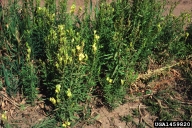 Plant(s); Steve Dewey, Utah State University, Bugwood.org Additional Resolutions & Image Usage |
 Flower(s); Richard Old, XID Services, Inc., Bugwood.org Additional Resolutions & Image Usage |
 Plant(s); Field of flowers, Routt NF, CO William M. Ciesla, Forest Health Management International, Bugwood.org Additional Resolutions & Image Usage |
 Infestation; Pikes Peak Ranger District, Pike National Forest, south-central Colorado Dave Powell, USDA Forest Service, Bugwood.org Additional Resolutions & Image Usage |
 Infestation; Steve Dewey, Utah State University, Bugwood.org Additional Resolutions & Image Usage |
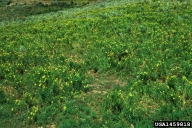 Infestation; Steve Dewey, Utah State University, Bugwood.org Additional Resolutions & Image Usage |
 Infestation; Steve Dewey, Utah State University, Bugwood.org Additional Resolutions & Image Usage |
 Seed(s); Steve Hurst, USDA NRCS PLANTS Database, Bugwood.org Additional Resolutions & Image Usage |
 Diagram or Graphic; Britton, N.L., and A. Brown. 1913. Illustrated flora of the northern states and Canada. Vol. 3: 177. USDA PLANTS Database, USDA NRCS PLANTS Database, Bugwood.org Additional Resolutions & Image Usage |
| EDDMapS Distribution: This map is incomplete and is based only on current site and county level reports made by experts and records obtained from USDA Plants Database. For more information, visit www.eddmaps.org |
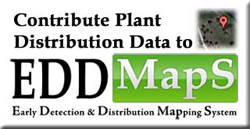 State(s) Where Reported invasive. Based on state level agency and organization lists of invasive plants from WeedUS database. |
| U.S. National Parks where reported invasive: |
| Glacier National Park (Montana) Harpers Ferry National Historical Park (West Virginia) Rocky Mountains National Park (Colorado) Yellowstone National Park (Wyoming) |









